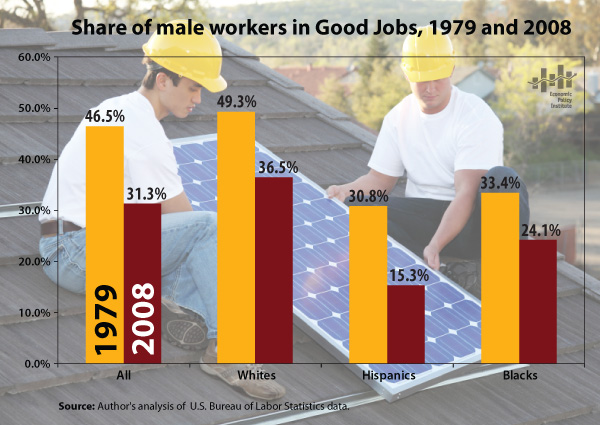By Algernon Austin
Many of the 8.1 million jobs lost during the current recession, have been good jobs. EPI defines a good job as one that pays at least 60% of the median household income and also provides health care and retirement benefits. By that measure, American men are losing ground. The figure shows that the share of male workers employed in good jobs dropped from 46.5% in 1979 to 31.3% in 2008. Of the major racial and ethnic groups, Hispanic men experienced the largest percentage-point decline although in 1979, they already had the lowest rate of employment in good jobs. In 1979, 30.8% of Hispanic men were employed in a good job. By 2008, only 15.3% were in good jobs.

As policymakers consider ways to create more jobs to reverse the longstanding rise in unemployment, which stands at 10.2% nationwide, they should also focus on creating the kinds of jobs that pay more than poverty level wages. The federal minimum wage is currently $7.25 per hour and pays $15,080 annually, based on a 2,080-hour work year. That wage is below the poverty level for a family of four. By contrast, the 2008 “good job” wage was $14.51 per hour, or $30,180 a year — twice as much. Without a national agenda to create good jobs, more fulltime workers will struggle to pay for basic necessities.
On Thursday, November 12th, the Economic Policy Institute will host a panel discussion, Reversing the Decline in Good Jobs, and will release the paper Getting Good Jobs to America’s People of Color, which also discusses good job trends among female workers.
